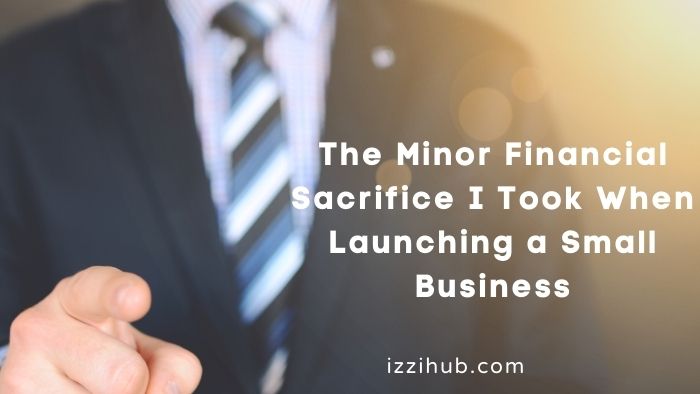The Minor Financial Sacrifice I Took When Launching a Small Business

I’m not going to tell you that I’m some hot-shot business-type that made a million over the course of a year. I’m like you – I have my normal routine – but I happen to have a side business. My side work stemmed from what I had already been doing for a company (website development and marketing) so it only felt natural to see if I could do it during the off hours when I would have otherwise been binge-watching Netflix or reading a ton of news.
Getting started wasn’t too difficult in terms of the skills because I was already in the field – what was trouble was the capital. I knew I would be up against others that were already established and had a budget that could go into their growth and marketing. Since I hadn’t yet gained a client I had to cut some corners to be able to compete with the competition.
What I did was no different than any other rational individual would do:
- Trim the fat
- Analyze and refine the expenses
I knew that my success in this new venture would be a combination of sacrifice and smart spending.
The sacrifice would come from giving up on lifestyle expenses I had become accustomed to, while the smart spending dealt with finding alternatives to services/lifestyle items I couldn’t live without. I wanted to work from home, at least in my mind, for this new venture.
So I set out to approach it in a manner where I could do this as if I didn’t have my stable job. This meant I needed to peek at the everyday expenses from food to rent, utilities, gas, and more for jumble Solver.
There were a few different ways to cut costs so I can rework those savings into business investment:
- I switched to a new, local energy provider, Direct Energy, which had better rates
- I cut the cord on cable and went with just Internet and streaming services
- I renegotiated insurance plans for my car
With just those (which I highly recommend everyone do at least once a year) I began saving a couple of hundred bucks each month right off the bat.
The next was to change my lifestyle.
Lifestyle changes are often the most difficult to make because they’ve become so common and routine. You become hard-pressed eating a great meal at a restaurant to one that’s zapped in the microwave – but this had to be done because I knew the benefits through the sacrifice.
The most important sacrifices I had made to lend toward building capital for the venture were:
- Switching to cooking, backed by my pantry stock
- Using a “30-day cooldown” whenever I saw a product I wanted
- Turning my relaxation time into work time
Cooking had a significant impact which I still believe is one of the biggest motivators for lifestyle changes.
When you’re not pushed to go out to eat (by yourself, with a loved one, or with friends) you make due with what you have but also skip on those other small expenses (gas, parking, ticket costs, and the like). You become comfortable staying in; once that kicks in you have the incentive to focus on work.
The other two, waiting 30 days before making a big purchase and simply changing my leisure time into at least one hour of productivity, would bite in the beginning but before long it became routine.
Waiting on purchasing items allow you to find inexpensive alternatives – that extra hour often leads to at least one more lead for the business.
—
After these (relatively easy) changes I found myself saving $2-$300 a month which could go toward my side business.
This amount of money may not seem like much but for a side-income earner, it’s quite huge considering you most likely already have the tools.
The additional funds added to the momentum in branding, marketing, and advertising. The leads trickled in and before long I was able to snag enough clients to make all the sacrifices worthwhile.
Combine these with other money-saving techniques and you may find yourself working that side-gig as your full-time position; it takes a considerable amount of effort up front but it pays off in the long-term.